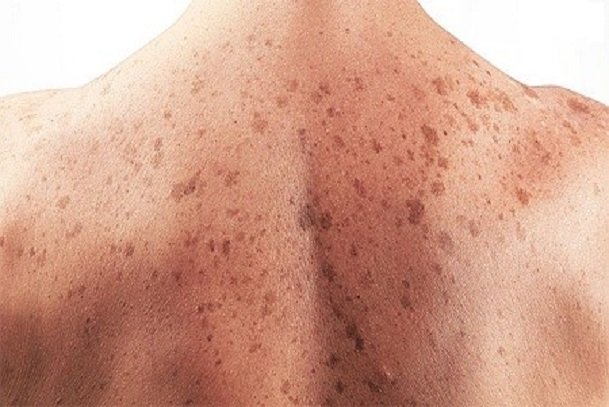 Wash your hands regularly and wear a face mask.
Learn more
Wash your hands regularly and wear a face mask.
Learn more

Skin cancers are abnormal growth that occurs on the skin of the human body; and many skin cancers develop where they are usually obvious to be seen, making it a good chance of diagnosing them early. Proper and regular examination of the skin to check for any unusual or abnormal changes in the skin size, colour is very important and critical. The moment such changes are seen, it is best to discuss with a professional medical doctor or skin doctor (dermatologist) that can help recognize the signs and symptoms.
Although most skin cancers develop in areas exposed to the sun due to its ultraviolet rays, they can also develop and grow in areas that are usually hidden from the sun. That it’s very important to examine areas between the toes, palms of both hands, underneath of the toes, soles of the feet, private parts and also the eyes.
Also, having an unusual growth or sore, mole that doesn’t go away may be the first indication of a non – melanoma skin cancer, yet skin cancer may also appear as a nodule, rash or irregular patch on the surface of the skin. These spots may be raised and ooze or bleed easily. But as the cancer grows, the size or shape of the visible skin mass may change and the cancer may grow deep into the skin layers. That is why those that have high risk of getting skin cancer or have been treated of one disease or the other, needs to familiarize themselves with the symptoms.
The general warning signs of skin cancer include:
Basal Cell Carcinomas Signs and Symptoms
Most basal cell carcinomas usually occur in the most sun – exposed areas of the human body i.e. the neck and the face, and also asymptomatic (they show little or no symptoms at all). At first they appear as a pale patch of the skin or waxy translucent bump making it look naturally normal. Therefore basal cell carcinomas appear as:
Squamous Cell Carcinomas Signs and Symptoms
Squamous cell carcinomas, just like the basal cell carcinomas may also develop as a lump on the skin that bleeds after a minor trauma. Unlike the basal cell carcinomas, these firm lumps are typically rough on the surface. Most often, squamous cell carcinoma occurs on sun - exposed areas of your body, such as your face, ears and hands. People with darker skin are more likely to develop squamous cell carcinoma on areas that aren't often exposed to the sun such as the genital region or in scars or skin sores. It appearance includes:
Melanoma Signs and Symptoms
This is the most dangerous type of skin cancer that can develop anywhere on the human body. It usually appears on the face or genital areas in affected men, but in women it mostly develops on the lower part of the legs. That means in both gender, melanoma can occur in areas that are not exposed to the sun at all. It can affect any person with any skin tone, which is why in darker skin toned persons; it tends to affect their palms, soles of their feet or the underneath of their fingernails.
Melanoma signs include:
Note: For easy remembrance of the signs and symptoms of melanoma are the ABCDEs of melanoma which are: Asymmetry, Borders that are irregular, Colour change, Diameter larger than a pencil eraser, Evolution of a mole’s characteristics, be it size, colour, elevation, bleeding, itching, or crusting.
Signs and Symptoms of Less Common Skin Cancers
Merkel Cell Carcinoma: These are red or flesh – coloured moles that are firm and shiny that grows quickly, occurring beneath the skin and hairy areas. It is usually occur in sun – exposed areas of the sun such as the neck, face or scalp.
Kaposi Sarcoma: This type of skin cancer is quite rare and develops in the skin’s blood vessels causing red or purple patches on the skin or mucous membranes. It occurs mainly in people with weak immune systems, such as people with AIDS or other form of cancer.
Sebaceous Gland Carcinoma: An uncommon and very aggressive cancer occurs in the oil glands in the skin. It usually appears as hard, painless nodules, developing anywhere but manifest on the eyelid, thereby creating a misconception for eyelid problems.
[Next on Skin Cancer: Diagnosis and Stages of Skin Cancer]